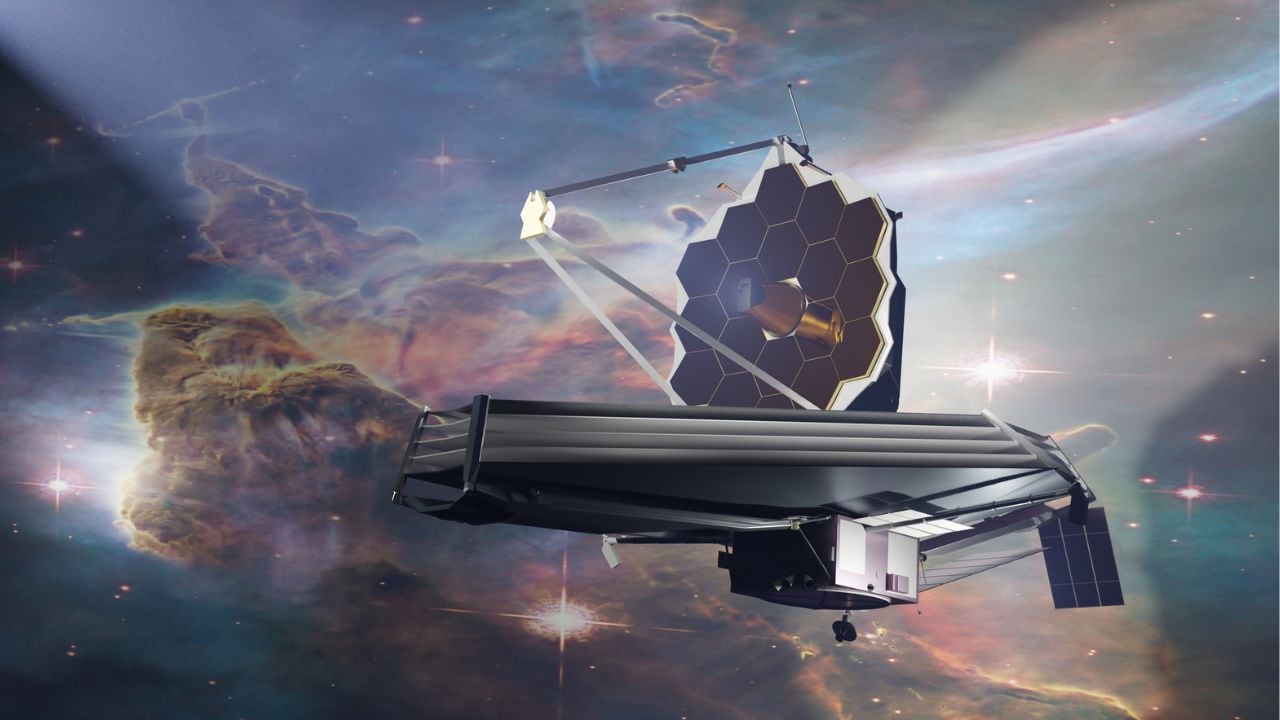Unveil the location of the James Webb Space Telescope at Lagrange Point L2 and embark on an unparalleled cosmic journey to the farthest reaches of the universe. Explore the strategic location that allows the James Webb to unveil the secrets of the cosmos from a dark and interference-free environment. Get ready to marvel at the images and discoveries this cutting-edge observatory will bring us from its unique space location!
The most powerful cosmic observatory ever built is ready to take us on an unprecedented journey through time and space. The James Webb Space Telescope, a marvel of engineering and science, is about to spread its massive wings in the darkness of deep space. In this article, we will delve into the exciting mission of the James Webb and discover the incredible distance at which it is located and its location.

The New Jewel of the Cosmos
The James Webb Space Telescope, also known as JWST, is the successor to the iconic Hubble and promises to revolutionize our understanding of the universe. This incredible space observatory boasts cutting-edge technology and a primary mirror with a diameter of 6.5 meters, making it the largest and most powerful telescope ever launched into space.
A Journey into the Depths of Time
The launch of the James Webb is scheduled for later this year, and once in space, its final destination will be the second Lagrange point (L2) of the Earth-Sun system. But what exactly is the Lagrange point L2?
The Lagrange Point L2: A Special Place in Space
The Lagrange point L2 is a gravitational balance point located approximately 1.5 million kilometers from Earth in the opposite direction of the Sun. At this location, the gravitational forces of Earth and the Sun are balanced, allowing the telescope to maintain a stable position and follow an orbit similar to that of Earth around the Sun.
A Strategic Location
The choice of the Lagrange point L2 as the location for the James Webb Space Telescope was not a random decision. This position offers several advantages that make it the ideal place for conducting long-range astronomical observations.
Firstly, the JWST's location at Lagrange point L2 ensures that it is permanently shielded from Earth's shadow, thereby avoiding interference from the light and heat emitted by our planet. This provides a darker and colder environment, ideal for capturing sharper and more detailed images of the distant cosmos.
Furthermore, being located at the L2 point allows the telescope to continuously observe a specific part of the sky without interruptions, which is especially valuable for missions that require long periods of observation, such as the study of exoplanets or the search for the universe's first stars and galaxies.
The Long Journey to the L2 Point
Launching the James Webb to the Lagrange point L2 was no easy task. The spacecraft required a series of maneuvers and gravitational assists to reach its final destination.
After its launch, the telescope was placed into an elliptical orbit around Earth. It then performed a series of engine burns to gradually increase its altitude and move away from Earth's gravitational influence.
After reaching a safe distance, the James Webb took advantage of the Moon's gravitational assist to further raise its orbit. This "lunar boost" allowed it to more efficiently distance itself from Earth and begin its journey to the Lagrange point L2.
Finally, after several months of maneuvers and trajectory corrections, the James Webb Space Telescope arrived at its final location at Lagrange point L2, ready to deploy its instruments and commence its scientific mission.
A New Era of Discoveries
Once the James Webb is fully operational at Lagrange point L2, it will begin sending back images and information of unparalleled beauty and depth. This telescope will allow us to explore the farthest reaches of the universe, from the formation of the first stars and galaxies to the search for possible signs of life on other planets.
The James Webb will unravel the mysteries of the cosmos and expand our knowledge of the origin and evolution of the universe. We are about to witness discoveries that will challenge our perceptions and open new doors to the infinite.
Deja una respuesta


IMPRESCINDIBLES DE LA SEMANA